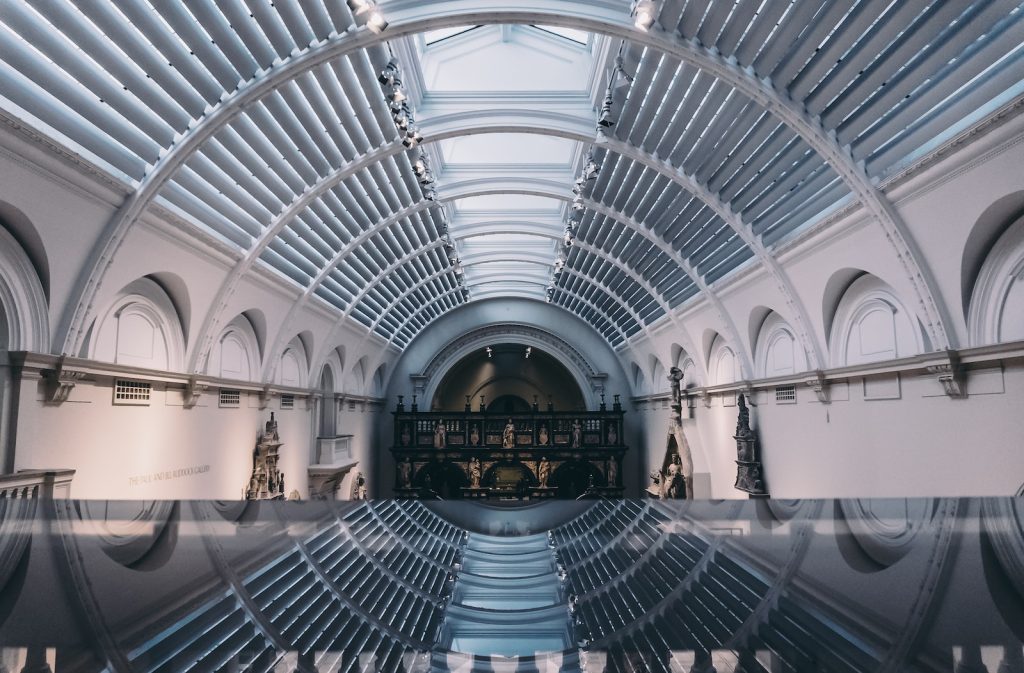What is Balance
Design is an art form that has been around since the beginning of civilization, and while the tools and methods used to create designs have changed over time, one principle remains constant: balance. Balance is a fundamental principle in design that ensures that all design elements are symmetrically distributed and complement each other. Applying the principle of balance to your designs can help create stunning visuals that draw people in and make them want to explore further.
Symmetrical Balance

Symmetrical balance is a design principle that can create a sense of stability and order in a composition. It is achieved when elements are arranged in a mirror-image fashion, with each side of the design being the exact or near-exact reflection of the other. This can be done vertically, horizontally, or even diagonally. Symmetrical balance is often used in traditional, formal designs and can create a feeling of calm and serenity.
It can be achieved through elements such as shapes, colors, and textures and can help establish a sense of structure and organization. However, it’s essential to use the symmetrical balance in moderation, as an over-reliance on this principle can result in a static and uninspired design. When used effectively, symmetrical balance can be a powerful tool for creating visual harmony and conveying a sense of sophistication and elegance in design.
Asymmetrical Balance
Asymmetrical balance is a design principle that can be used to create a sense of visual interest and dynamic movement in a composition. Unlike symmetrical balance, where the elements are arranged in a mirror-image fashion, asymmetrical balance is achieved through the use of unevenly distributed elements. However, the arrangement of the elements is still made to create a sense of balance through careful consideration of factors like size, color, and texture.
Asymmetrical balance can be used to create a more informal, relaxed feeling in a design. It can be achieved through the use of a variety of elements, such as shapes, lines, and colors, and can be used to draw attention to certain parts of the composition. Asymmetrical balance can create a sense of tension, movement, and energy in a design, making it an effective tool for creating visual interest and guiding the viewer’s eye through the composition.
One of the benefits of asymmetrical balance is that it allows for more creativity and flexibility in design. It can create a wide range of moods and emotions, from calm and serene to dynamic and exciting. However, it’s important to use the asymmetrical balance in a thoughtful and intentional way, as an over-reliance on this principle can result in a design that feels chaotic and unbalanced. When used effectively, asymmetrical balance can be a powerful tool for creating visually engaging and compelling designs.
Radial Balance
Radial balance is a design principle based on arranging elements around a central point, creating a circular or spiral pattern. It is often used in designs that require a sense of movement, such as those related to nature or technology.
Radial balance can be achieved through elements such as shapes, lines, and colors and can be used to create a sense of rhythm and harmony in a composition. The central point acts as an anchor for the design, while the elements radiating outward can create a sense of movement and energy.
One of the benefits of radial balance is that it can be used to draw attention to specific parts of a design. By placing important elements near the center of the composition, you can guide the viewer’s eye and create a sense of hierarchy. Radial balance can also create a sense of unity and cohesion, as the elements are all connected to the central point.
However, it’s important to use the radial balance in moderation, as over-reliance on this principle can result in a contrived or unbalanced design. When used effectively, radial balance can be a powerful tool for creating designs that convey a sense of movement, energy, and unity.
Monochromatic Balance
Monochromatic balance is a design principle that involves using a single color or hue and its various shades and tints to create a sense of balance in a composition. It is often used in minimalist designs that require a sense of harmony and simplicity.
Monochromatic balance can be achieved by using different shades and tints of the same color, such as light and dark blues or pale and deep greens. This can create a sense of depth and dimension in the design while maintaining a sense of unity and harmony.
One of the benefits of monochromatic balance is that it allows for a high degree of control over the color scheme, making it easier to create a sense of harmony and balance in a design. Monochromatic designs can also be very calming and soothing to the eye, making them well-suited for designs related to health and wellness.
However, it’s important to use monochromatic balance thoughtfully and intentionally, as an over-reliance on this principle can result in a monotonous or dull design. To create a visually engaging monochromatic design, it’s important to use a range of shades and tints and to incorporate elements such as texture and pattern to create visual interest. When used effectively, monochromatic balance can be a powerful tool for creating designs that convey a sense of simplicity, unity, and sophistication.
Color Theory and Balance
Color theory and balance are closely related in design, as color can play a crucial role in creating a sense of balance and harmony in composition. It refers to the study of how colors interact and how they can be used to create different moods and emotions in a design.
One way to create balance in color is to use a complementary color scheme, which involves using colors that are directly opposite each other on the color wheel, such as red and green. Complementary colors can create a sense of vibrancy and energy in a design while maintaining a sense of balance and harmony.
Analogous color schemes, which involve using colors that are next to each other on the color wheel, can also create a sense of balance and harmony in a design. For example, using shades of blue and green can create a soothing and calming effect while still providing a sense of visual interest.
It’s important to use color theory thoughtfully and intentionally when creating a design, as an over-reliance on bright or bold colors can result in an overwhelming or chaotic design. To create a visually engaging design that conveys a sense of balance and harmony, it’s important to choose colors that work well together and use them to complement the other elements.
Proportion and Scale in Design
Both proportion and scale are important principles of design that refer to the relative size and relationship of objects or elements within a composition.
Proportion refers to the size and shape of an element in relation to the other elements in a design. It involves creating a sense of harmony and balance by ensuring that the elements are sized and arranged in a way that is visually appealing. In general, elements that are proportionate to each other tend to look more visually pleasing and harmonious than those that are disproportionate.
Scale refers to the size of an object or element in relation to the physical space it occupies. For example, a large sculpture in a small room may feel overwhelming, while a small sculpture in a large room may feel insignificant. The size of an element can be used to create a sense of emphasis, hierarchy, or drama within a composition.
When working with proportion and scale in design, it’s essential to consider the overall purpose of the composition, as well as the context in which it will be viewed. A design that is intended to convey a sense of grandeur, for example, may make use of larger elements and bolder proportions. In comparison, a design that is intended to convey a sense of intimacy or minimalism may make use of smaller elements and more subtle proportions.
To create a visually engaging design that effectively uses proportion and scale, it’s important to pay close attention to the relationships between the elements within the composition, as well as the overall balance and harmony of the design. By carefully selecting and arranging elements based on their size and relationship to each other, designers can create visually appealing, impactful, and emotionally resonant compositions.
Applying Balance
In conclusion, design principles such as balance, color theory, and proportion and scale are crucial in creating visually engaging and effective designs. Whether you are designing a website, a marketing campaign, or an interior space, it is important to consider how these principles can be used to create a visually harmonious, emotionally resonant, and effective composition to achieve its intended purpose.
By understanding and applying these principles thoughtfully and intentionally, designers can create designs that capture their audience’s attention, convey a specific mood or message, and ultimately achieve their desired outcomes. By continuing to explore and develop your understanding of these principles, you can unlock the full potential of your creative work and take your design skills to the next level.






























